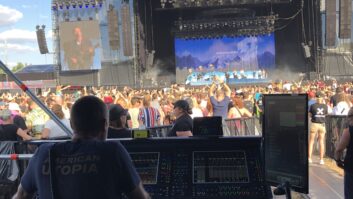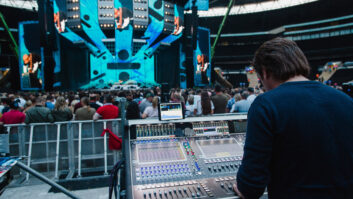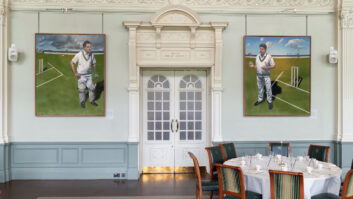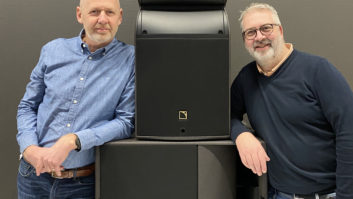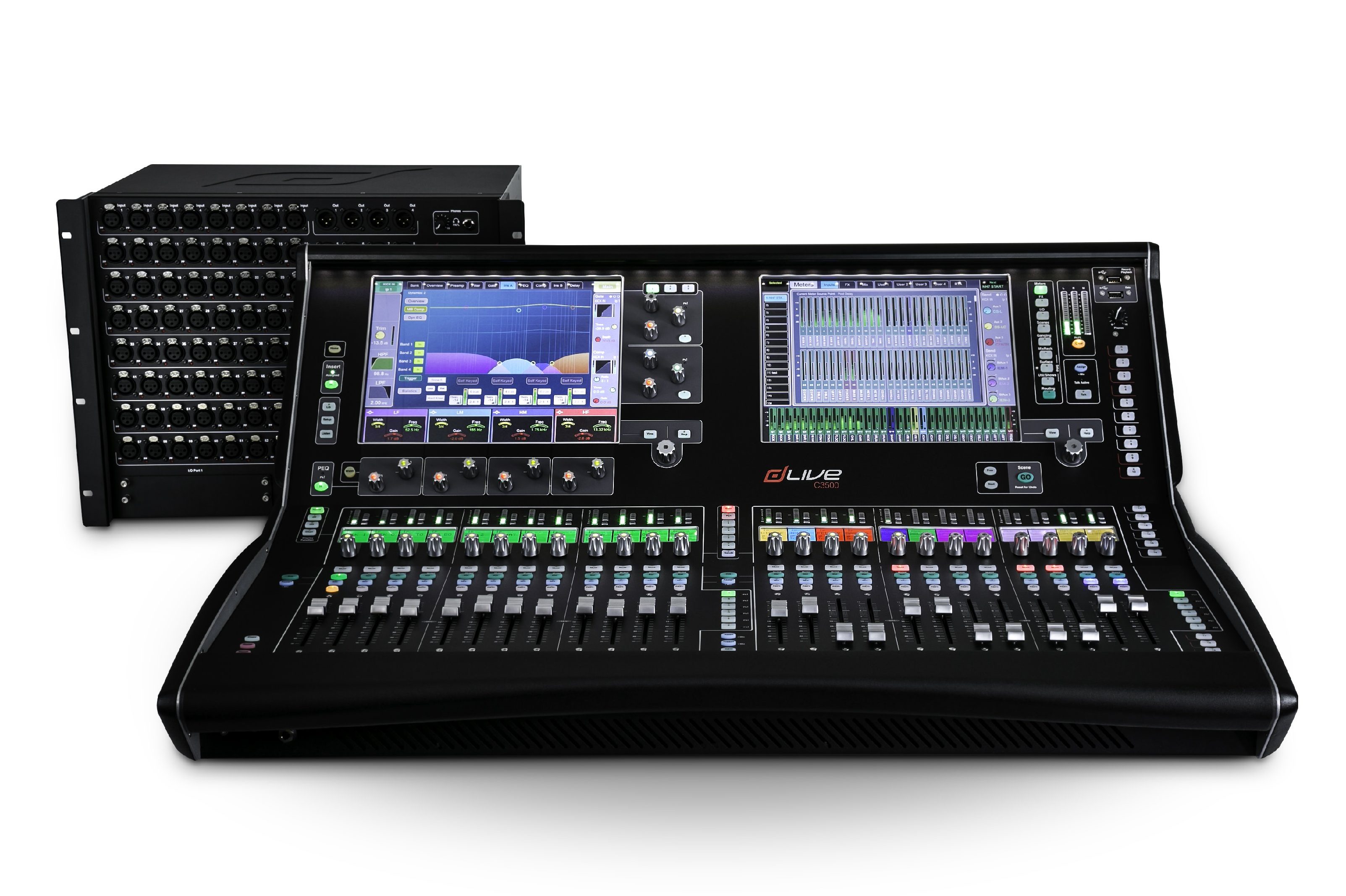
Intuitive operation, networkability and compactness are among the features that manufacturers of audio consoles for fixed installations are keen to highlight. Paddy Baker reports
dLive C Class offers more
Allen & Heath says its compact dLive C Class offers more channels, more busses, more processing power, more networking flexibility, more control options and lower latency than any other mixing system at a comparable price point.
The dLive C Class is based on XCVI, the same 96kHz FPGA core technology as the company’s flagship dLive S Class mixers. It features 128 input channels, 64 dynamic EQ and multiband engines, 16 FX engines with stereo returns, and 64 busses. It also shares the DEEP Processing architecture, allowing class-leading compressors and processing emulations to be embedded directly within the inputs and mix channels.
Because the XCVI Core is contained in the MixRack, this can be used with or without a control surface, depending on the application.
Expanders can be added to the MixRack for audio distribution over Cat5 and deployed where required, making dLive a scalable and flexible platform. Fully expanded, the dLive C Class offers over 400 system inputs and 400 system outputs, including two 128×128 ports for integration in audio networks via Dante, AES67, MADI and more. Tielines can be set up to patch inputs to outputs directly and without limitations.
Up to 10 user profiles can be configured with a set of custom permissions, and password protected.
In addition to control surfaces (which start with the 19in rackmountable 12-fader C1500), the DLive C Class has numerous other control options, including apps, Mac/Windows software, TCP/IP for third party control via Crestron, AMX or similar, and PoE powered IP remote controllers, all of which can be integrated in a standard Ethernet network and made accessible at any location.
CDC seven’s dual-touchscreen operation
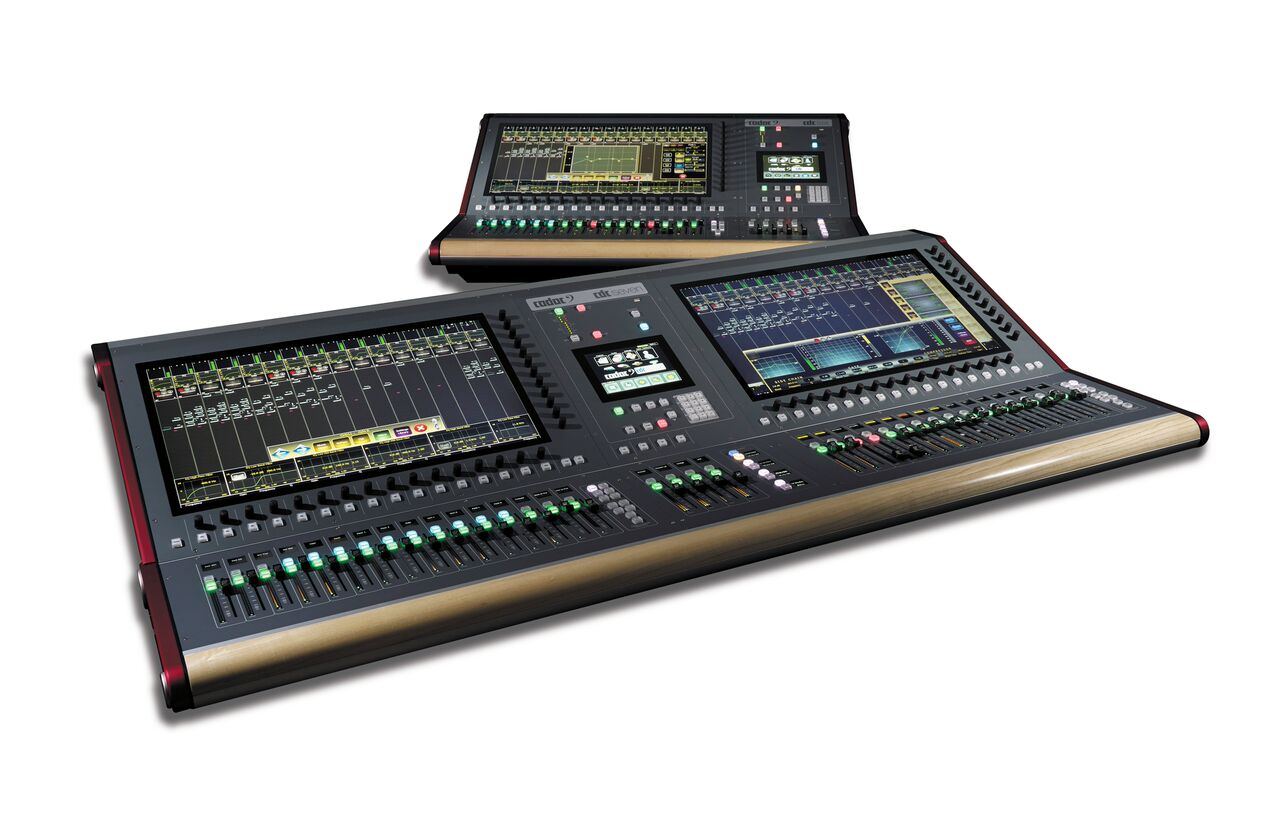
Cadac’s new CDC seven (pictured here with the smaller CDC six) promises operational simplicity with its 36-fader control surface and dual 23.5in, 16:9 hi-definition LCD touchscreens, which display an intuitive, swipeable user interface. Encoders immediately to the right of and below both screens further encourage the instinctive use of touch-and-swipe operation.
Dual screens enable multiple tasks to be displayed and controlled simultaneously; for instance, VCAs can be displayed on one screen while the inputs to the VCAs are displayed on the other. Faders and encoders naturally follow the GUI displayed on the individual screens, resulting in further increases in the speed and flexibility of the workflow. An additional centrally mounted 6.5in LCD touchscreen provides access for system control.
The CDC seven features 96 inputs and 56 busses, 54 of which are configurable. Its feature set includes Cadac’s Monitor Mode with Mix Focus, as well as the ability to create custom fader layers. All 36 motorised faders feature stereo metering and a full-colour user-definable OLED display.
The console employs Cadac’s MegaCOMMS digital audio network, which the company says is designed to meet the requirements of the most challenging installation applications.
Cadac’s CDC audio protocol is claimed to have the lowest latency of any in the industry: total through-system propagation delay from inputs on stage to outputs, including all console processing and A-D/D-A conversions, is just under 400μs.
Powerful operation with ease of use
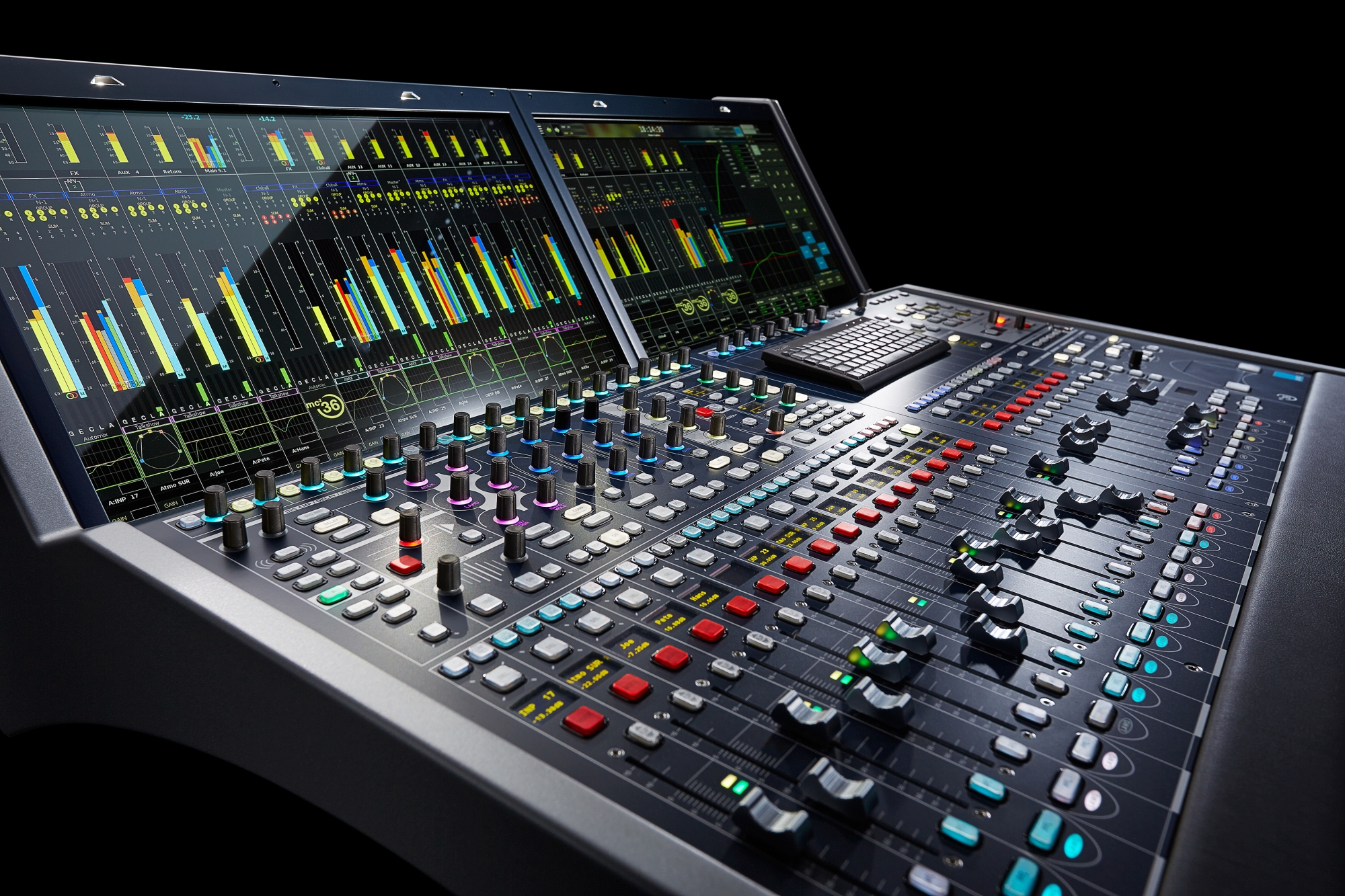
Lawo says that the compact mc²36 is designed to fulfil the most performance-demanding applications, while at the same time offering operators ease of operation and a minimal learning curve. A powerful DSP micro-core with internal 512×512 port audio matrix, and integrated I/O, make it ideally suited to permanent installations with limited space.
Natively equipped with RAVENNA/AES67 technology, the mc²36 integrates seamlessly into IP infrastructures, providing comprehensive access rights management for all networked audio desks. It can be integrated into large control networks using overall open-standard control and monitoring solutions like VSM (Virtual Studio Manager), which makes the mc²36 also a powerful system in special environments, such as cruise ships and conference centres.
For operational security, the console not only has redundant power supplies but also offers DSP redundancy.
The 21.5in full HD touchscreens work with touch-sensitive colour-illuminated rotary encoders to provide intuitive operation. So, for instance, the dynamics window will automatically pop up when touching the dynamics encoders; and after adjusting the parameters, the window will close automatically to restore the full overview.
Connectivity includes 32 mic/line inputs, 32 line outputs, eight digital AES3 inputs, eight digital AES3 outputs, eight GPIO ports, one MADI (SFP) port, three RAVENNA/AES67 channels, and a headphone jack. It is available in 16-, 24- or 40-fader versions.
iPads boost AXIS’s visual communication
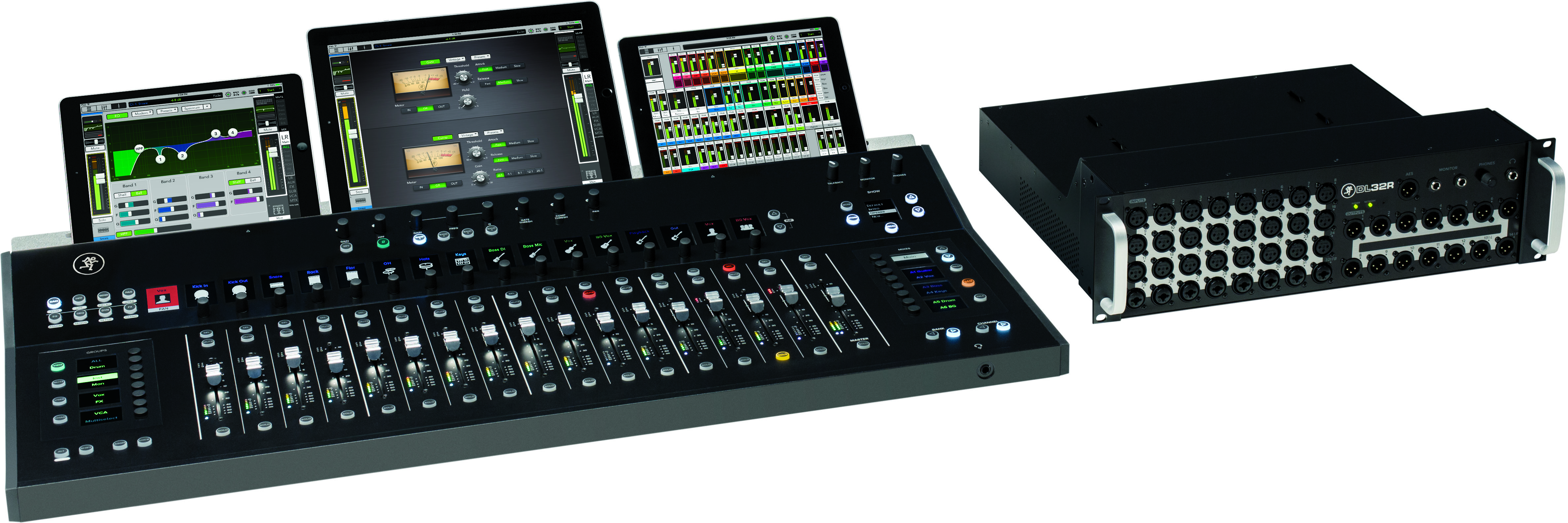
Mackie’s AXIS Digital Mixing System combines the 32-channel DL32R digital mixer with the innovative DC16 control surface.
According to the manufacturer, it enables extremely fast workflow, with high levels visual feedback and customisation.
With 32 remote-controllable Onyx+ mic preamps and 18 outputs paired with massive built-in DSP, the system is suitable for medium and large channel-count applications. The mixer and control surface communicate via Dante, enabling additional networking capability for professional applications.
Visual feedback is provided by large, full-colour channel displays, which deliver critical channel information with clear functional colour differentiation, crisp icons and ultra large, highly legible fonts that are easy to read at all times.
Additional visual display capability comes from up to three iPads, which can be connected wirelessly via the integrated SmartBridge. These, say Mackie, are at the heart of the AXIS system. Users can switch seamlessly between the DC16’s hardware controls and wireless mixing. Smart sensing detects when an iPad is in place, and SmartBridge enables each iPad view to be customised: fixed and history modes create workflow flexibility.
Vistonics interface is central
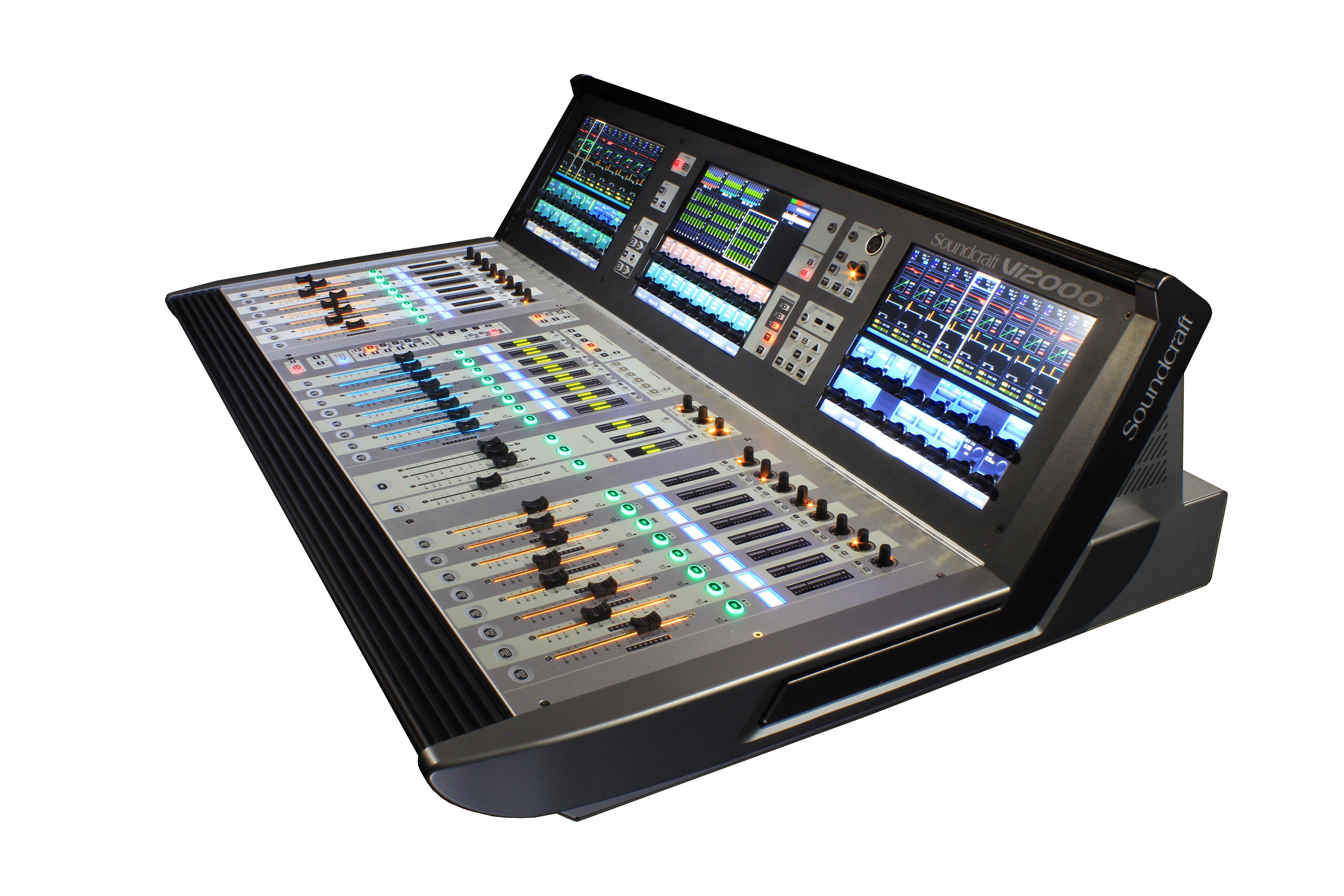
The Vi2000 from Soundcraft by Harman combines the Vistonics-based control surface of other Vi consoles with Soundcraft SpiderCore, a powerful integrated DSP and I/O engine based on Studer technology.
Central to the Vi2000 design, the Vistonics interface provides direct access to all functions with maximum information and visibility at all times. Multiple switches and rotary encoders are built into each Vistonics screen, so where you look is where you control. Functions are colour-coded and change according to the selected mode. One touch of the screen is all it takes to bring all relevant controls to the operator’s fingertips.
The total I/O count of the console is 246 in and 246 out. It is configurable up to 48 mic line inputs and 16 line outputs, using combinations of 16-channel XLR modules in four rear-mounted slots. The console also includes two 64-channel expansion slots, allowing up to two MADI-based stageboxes to be connected. Alternatively, the slots provide can be used for D21m I/O option cards, available for all industry-standard audio formats.
A built-in 64×64-channel Dante interface provides direct recording/playback connection to any PC- or Mac-based recording software via Ethernet. It also allows the Vi2000 to integrate into an existing Dante network.
Compact model with automixing
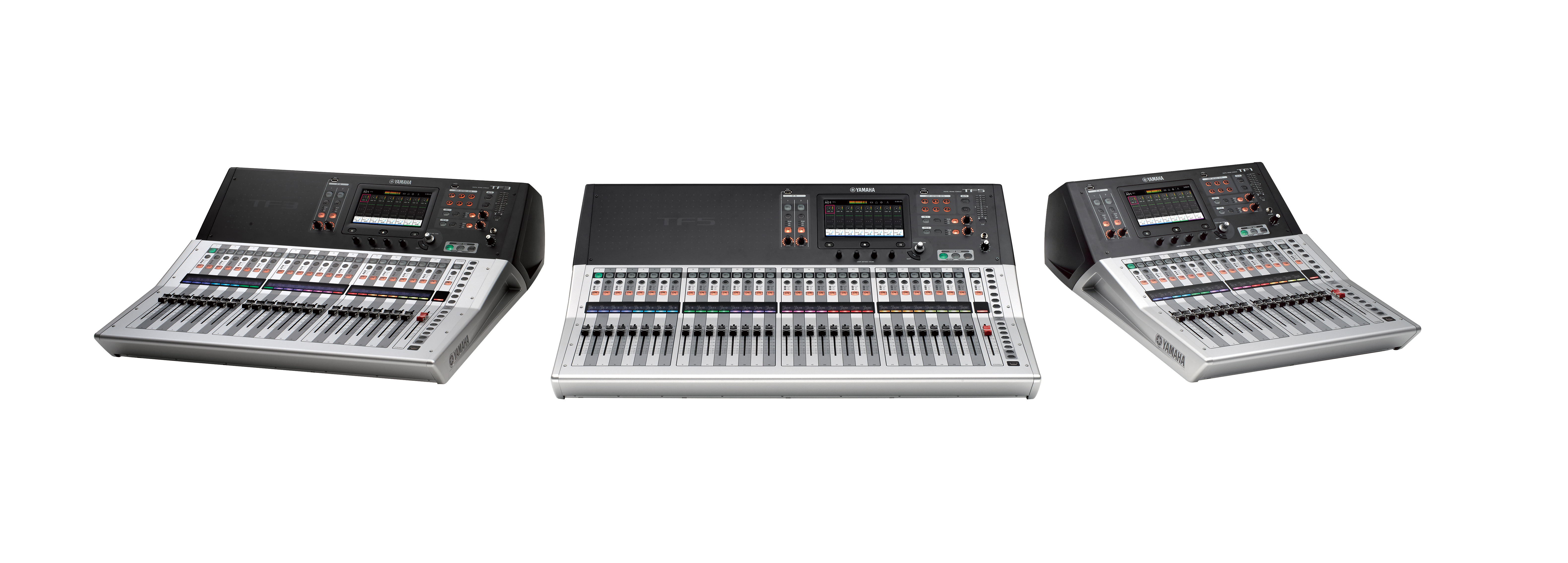
The Yamaha TF series offers a compact mixing solution: the TF1, TF3 and TF5 take up very little desktop space, while TF-RACK only needs 3U space in a standard 19in rack.
According to Yamaha, no other mixer in this class can provide industry-standard Dan Dugan automixing as an integral part of the operating system, making the TF series unique for installers and systems integrators. Thanks to the TF’s space-saving qualities and automixing capability, any venue can host easily mixed, multi-microphone events for a minimum outlay of both money and space.
The series features a comprehensive range of I/O connections, including 16, 24 or 32 analogue XLR/TRS combo mic/line inputs and plus stereo analogue RCA pin line inputs. Outputs comprise 16 analogue XLR outs. 34 x 34 digital record/playback channels can be accessed via USB 2.0 + 2×2 and a USB storage device.
An expansion slot for an optional NY64-D audio interface card is provided. This, along with a Tio1608-D I/O rack unit, is all that is needed for a basic high-quality, low-latency Dante network.
With 48 input mixing channels, 20 Aux busses and eight DCA groups with roll-out, the Yamaha TF series is a highly flexible, mixing solution whose facilities belie its compact size.

